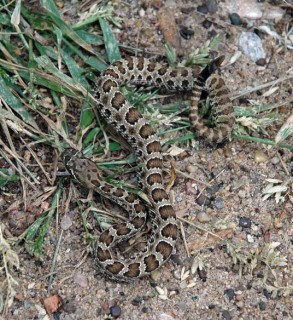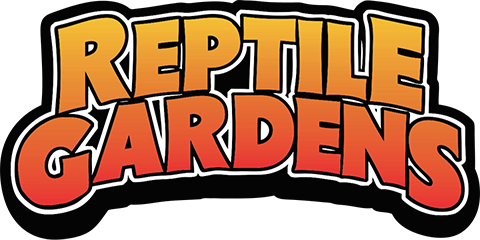Why in MY Yard?
Snakes are an integral part of our ecosystem and are, in fact, the number one predator of rodents and other little creatures we consider pests. These pests can be carriers of even nastier pests and diseases. So, in fact, we should be grateful for our legless neighbors.
All that said, what should be done when we find that a rattlesnake has disrupted the sanctity of our backyard where we want our children and pets to romp and play without a care in the world? Naturally, the best thing to do in the event of a rattlesnake encounter is simply to leave them alone. The number one reason people are bitten by venomous snakes throughout this country is because of the attempt to catch, kill, or tease them when we find them. But I have kids and I certainly understand people not wanting to have rattlesnakes in or around their homes. But, catching, killing, or messing with wildlife of any type, for any reason, is a basic recipe for a trip to the Emergency Room. And in the case of a rattlesnake envenomation, a very expensive trip to the E.R.
Simply left alone snakes will generally continue on with their nomadic summer lifestyles. The venom of the rattlesnake is designed to secure their food, which in this case is rodents of various types, as well as defending themselves from all manner of natural and unnatural predators. Coyotes, foxes, badgers, skunks, wild turkeys, and birds of prey are all natural predators of the Prairie Rattlesnake. And now, the garden shovel, rake, hoe, car tire, boot, six-pack of beer and shotgun are all unnatural predators of the rattlesnake.
Rattlesnakes do not actively seek out confrontations with any of their natural enemies, humans included. A rattlesnake will always attempt to find a place to retreat, or hide to avoid being detected. So, if that rattlesnake does end up in your yard or garden, my professional opinion is to just leave him alone. Let him move on since chances are he is just passing through. Honestly, this is the safest way to interact with a rattlesnake.
 But hey! Why did he choose MY yard instead of the neighbors? Rattlesnakes are reasonably intelligent cold-blooded reptiles that require just a few things to be happy: Food, water, shelter, and a mate. Unfortunately, our homes' manicured lawns and gardens provide a 5 star resort for our scaly friends. Rattlesnakes have been found in all parts of Rapid City, from the outskirts to downtown. No area is completely devoid of snake activity. The best way to avoid an encounter with a rattlesnake is to take a look at your property and see if you can determine what is so attractive about your yard versus the yard next door. I recommend keeping your grass cut short, shrubs trimmed up from the ground a foot or so. Remove any and all trash piles, rock piles, woodpiles and other sources of cover and try to eliminate their food source by removing any rodent populations. Get rid of those four things that snakes need and your likelihood of a slithery encounter will be reduced dramatically.
But hey! Why did he choose MY yard instead of the neighbors? Rattlesnakes are reasonably intelligent cold-blooded reptiles that require just a few things to be happy: Food, water, shelter, and a mate. Unfortunately, our homes' manicured lawns and gardens provide a 5 star resort for our scaly friends. Rattlesnakes have been found in all parts of Rapid City, from the outskirts to downtown. No area is completely devoid of snake activity. The best way to avoid an encounter with a rattlesnake is to take a look at your property and see if you can determine what is so attractive about your yard versus the yard next door. I recommend keeping your grass cut short, shrubs trimmed up from the ground a foot or so. Remove any and all trash piles, rock piles, woodpiles and other sources of cover and try to eliminate their food source by removing any rodent populations. Get rid of those four things that snakes need and your likelihood of a slithery encounter will be reduced dramatically.But I know many of you will not be willing to wait for your snake visitor to move on. If you feel you must kill it then do be careful. Even though stories of snakes continuing to live for hours or days after losing their heads is completely false, muscle twitches can cause a severed head to "bite" for a while afterwards. So, it is possible to get envenomated by a dead rattler. I know animal control is quite busy during the summer catching snakes in yards and bringing them to us so you might be able to get them to assist you. Although honestly the snake will likely have moved on before they even get to your house.
Many people think that snakes like it hot when in fact they prefer temperatures closer to the ones we enjoy. A temperature of about 80 degrees is perfect for all aspects of a rattlesnake's life. We have an increase in calls here and rattlesnake encounters out there beginning in mid-May to early June because the snakes are active during the day, same as we are. As summer rolls in and the temperatures get higher, rattlesnakes start becoming active in the early morning hours, evenings and overnight, again, much like our own outdoor activity periods. We start gardening in the morning, mowing in the evenings and relaxing on the patio at night to avoid the heat of the day. So we continue our encounters until the fall. Mid-October finds the rattlesnakes back at their den sites getting ready for a long winter nap underground.
In part 3 I will discuss snakebite - what to do and not to do.





